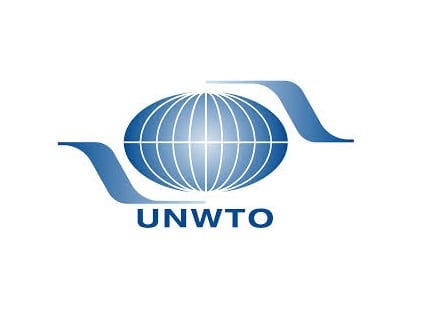
Worldwide Tourism in Spain Is Nonetheless Weak
The Spanish tourism industry continues to show losses. In the first quarter of 2021, only 1.6 million foreign tourists came to the country by air, 87.5% fewer than in 2020 and 90.4% fewer than in 2019, when the same period exceeded 17 million international arrivals, according to data from the International Passenger Study Created by Turespaña.
By months, 565,666 travelers arrived in January, 430,244 in February, and another 658,943 in March, making the number low compared to previous years when all records were broken for arrivals year after year.
The decline has affected both low-cost airlines and traditional airlines. In that quarter of the year, 495,175 passengers traveled on low-cost airlines, 93% fewer than in 2020 and 94.7% fewer than in 2019. The decline was smaller for traditional airlines, although the impact is still important. From January to March, these airlines carried a total of 1.1 million passengers (81.1% fewer than in 2020 and 85.2% fewer than in 2019).
In March of last year, almost 660,000 passengers arrived via international airports, 71.8% and 90% fewer than in the same months in 2020 and 2019, respectively. Of these, 70.2% chose traditional airlines and recorded a decrease of 58.4 % (-84.6% compared to 2019). The remaining 29.8% who traveled on low cost airlines (LCC) were down 84% (-94.5% from 2019).
International tourism data released by Turespaña last week shows that the country received 1.65 million international passengers between January and March, 87.5% and 90.4% fewer than in 2020 and 2019.
International cheap arrivals saw a year-on-year decrease of 93% (-94.7% compared to 2019), while traditional businesses fell by 81.1% (-85.2% compared to 2019). 62.4% of all arrivals came from the EU and the UK, a decrease of 93.6% (-98.6% compared to 2019). Arrivals from the rest of the world (only 37.6%) saw a decrease of 86.1% (-97% compared to 2019).
Main cases in the UK market
Turespaña data for March shows that all tourism markets for Spain declined, with Turkey being the least affected (down 31.5% from 2020 and 75% from 2019) while the UK was the hardest hit market (down by 96.5%)% compared to 2020 and 98.7% compared to 2019).
In March, only 2.9% of travelers were from the UK. The UK market accounted for just 3.3% of total low-cost arrivals, with a sharp drop of 98.5% (down 99.4% from 2019). For traditional airlines, only 2.7% of passengers traveling on these companies were British, down 89.1% from 2020 and 96.7% from 2019.
German passengers (24.5% of the total) fell by 53% (-84.4% compared to 2019) and fell in all Spanish Autonomous Communities, especially in the Canary Islands, which are traditionally a German tourism market in winter. The other main markets, France, Italy and Switzerland, also recorded declines of 56.8% (-83% compared to 2019), 44.1% (-92.2% compared to 2019) and 56.1% (-85, 6% compared to 2019).
Madrid had the most arrivals
The decrease was significant for the six autonomous communities with the highest arrivals, reaching an overall decrease of 71.3% (-89.8% from 2019).
Madrid was the municipality with the most arrivals (40.9%), while the Canary Islands, Catalonia, the Balearic Islands, Andalusia and the Valencian Community together accounted for 58.2% of the total passengers arriving in Spain, according to the study. Madrid also had the most arrivals in traditional companies (54.2%) while the Canary Islands, Catalonia, the Balearic Islands, Andalusia and the Valencian Community accounted for 44.8% of the total passengers traveling on these airlines.
In terms of low-cost passengers, Catalonia recorded the highest number (23.8%), while 75.3% of all low-cost arrivals in the Canary Islands, the Balearic Islands, Andalusia, the Valencian Community and the Community of Madrid took place in Turespaña.
The outlook for the rest of the year
“Spain can’t have another summer like 2020. It can’t afford that,” said José Luis Zoreda, Executive Vice President of the Spanish Tourism Association EXCELTUR, a group that brings together tourism companies such as Iberia, Meliá, Riu, Globalia, NH and Renfe. Last week, Zoreda warned of the extremely low reserves, especially international ones, which would barely reach 10% of reserves in the summer of 2019 and would be partially offset by the attraction of international tourism.
The negative outlook was confirmed after the Secretary of State for Tourism’s latest report on air capacity, which found that the number of aircraft seats reserved for the second quarter is 14.1 million, 53.8% among the 30.5 million passengers in the same quarter The period of the previous year 2019 marks the start of the coronavirus pandemic.
It is expected that the arrivals in the further course of the year will have to be compensated by domestic or neighboring markets in Europe. The outlook for the two most important markets of origin (Great Britain and Germany, which accounts for 40.9% of passengers) is particularly poor with a decline of 53.8% for Great Britain and 60% for Germany.
The US decision to add Spain to the “do not travel” list along with 129 other countries also adds to this pessimistic outlook, as the risk has increased across most of the world.




